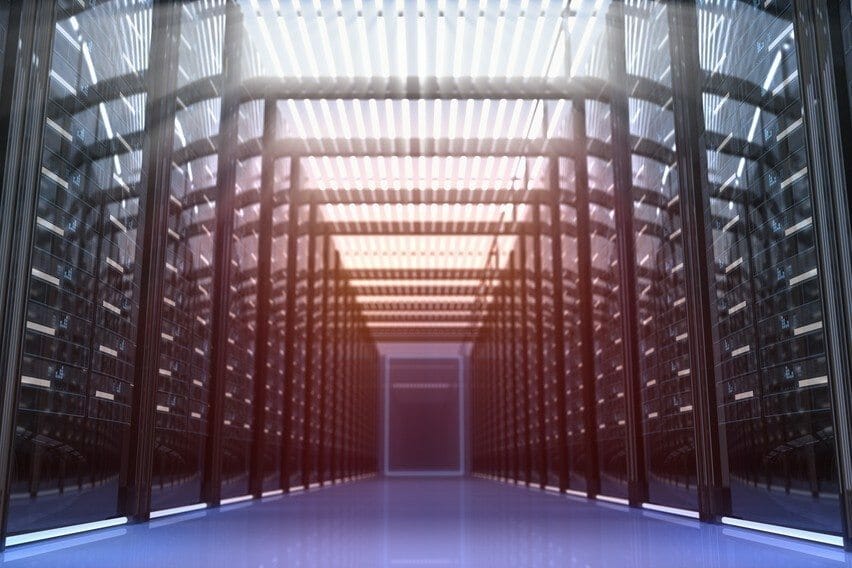Top Data Center Trends and Predictions to Watch for in 201714 min read

What changes are in store for the cloud and data center industry in 2017? We set to find out by talking to industry experts Lars Strong, Ian Seaton, Bruce Taylor, and Vince Renaud, here’s what they had to say:

The growing market segment of large colo and cloud facilities is having a positive effect on the energy consumption of the data center industry. The competitive nature of the colo and cloud segment requires that data be built with highly efficient cooling infrastructure. As IT workloads move from smaller less efficient facilities to the cloud, they are generally being supported by more efficient infrastructure.
I am seeing a trend among large corporations who continue to operate their own data centers to implement measures to reduce their sites’ PUEs. While there is nothing new about initiatives to improve efficiency and reduce operating costs, what is a new trend is how comprehensive and detailed the initiatives are, and how they are being established at a corporate level and uniformly mandated across all sites. Historically figuring out both the evaluation of problems and methods to improve has been left to the individual sites. Improving airflow management (AFM) is fundamental to improving efficiency and reducing PUE and operating costs. Establishing corporate wide methodology for the evaluation and remediation of AFM, and standardizing on approved solutions results in acceleration of the pace of improvements because what one site manager learns becomes more valuable to other site managers.
– Lars Strong

Edge data centers started out as essentially a synonym for content delivery networks (CDN) but industry commenters have since evolved the term to include Mobile Edge Centers and caching hubs for internet of things (IoT). As such, we will see a growing proliferation of these smaller, distributed data centers counter-balancing the trend toward consolidation in larger cloud mega data centers. Both trends, however, will contribute to the continued decrease of the enterprise data center share of the overall data center market. I think we might also expect to see more content providers get into the edge data center space with their own properties to better control costs and simplify the quality control management of performance for their customers.
2016 saw some more big names step on to the Open Compute and Open Rack train, and there will be more joiners in 2017. While the open compute project still represents less than 10% of today’s data center space, that proportion will continue climbing toward critical mass, particularly as some of the signers-on represent large businesses with ambitious build plans.
The continuing trends of consolidation into super mega-cloud data centers, transformation of edge data centers by content providers and growth of open compute space will all conspire to change the playing field for some suppliers into this space. The biggest change will be that, even though the market is growing, the number of customers will actually be shrinking. The effect of mega consolidation is obvious, but the growth of smaller edge data centers will also contribute to the reduction in customers as we can expect to see a movement away from collocating in independent local colo spaces to either collocating with edge specialists who will copy-and-paste their design around the country in second and third tier markets, or to content providers deploying their own cookie-cutter lean design around the country in those previously under-served markets. On the one hand, the open compute projects will drive toward a commoditization of rack, cooling and power distribution products, lowering costs … and supplier profits… and reducing the served available market of some channels. Conversely, we can expect the mega data centers and content provider edge data centers to be looking for design partners with whom they can work to establish competitive advantages for their spaces. These two opposing forces will eventually lead to some shake-out in industry segments serving the data center market and we may see that starting in 2017.
5G – still a few years off, but we can expect to start hearing about some beta system testing and steely-eyed observation should reveal how industry leaders and wannabes are trying to position themselves to cash in. This year should include mostly transparent planning for ensuring network readiness, from towers to PoP. 5G should enable the next explosion in mobile aps, requiring a commensurate increase in data center processing and storage capacity. Expect jockeying for both space and talent.
Just when you think we’ve finally run out of drivers for data center growth, up pops Pokemon Go. We have already seen a swirl of advertising of new virtual reality and augmented reality games during the Christmas season and it is reasonable to expect we are just seeing the nose poking through the doorway on this one. These new apps may not be exponential game changers to the data center landscape, but they will still help data center operators keep their spaces full and busy.
Look for larger companies in the data center space to acquire some of the smaller, floundering DCIM providers. Some forecasters have backed off a bit on long range projections for DCIM market growth, but still strategically important as more elements are more completely integrated.
Lastly, will we see a tipping point for containerized/modular data centers?
- Forces against: hyper-cloud-consolidation
- Forces for: edge, IoT
– Ian Seaton

- New data center builds continue apace, however fewer will be enterprise owned and operated. More will be multi-tenant lease, colo and hybrid cloud hosting.
- Major cloud platform and services providers will continue to drive.
- Hybrid cloud will be the pathway of choice for most enterprise cloud adoption.
- Telecom central office will become a major player in cloud network exchange.
- Network edge will continue to drive secondary market growth with smaller data center footprints.
- Modular micro edge-network data centers will be increasingly deployed to deliver hyperscale network capacity quickly, anywhere. Drivers are IoT, content delivery, and more.
- Carbon-reduction strategies — both in operating efficiency and in power sourcing — will continue with the leadership of the mega-hyperscalers.
- Industrial IoT monitoring and controls will continue to grow as analytics, optimization and automation continue to grow. However, Industrial IoT in the data center will be scrutinized for the security risks it poses.
- The drive toward the software-defined data center, which begun in the hyperscale world, will pick up steam .
- The IT:OT chasm that has been the bane of the data center industry for over 10 years, will be slammed shut by the demand for smart predictive analytics, particularly around power and cooling infrastructure. Building Management Systems meet DCIM/DCSO meet ITSM.
- Open-source will relentlessly challenge any and all proprietary IP, both in hardware and software, and the digital infrastructure world, and will increasingly commoditize and be rendered as a utility service. White box is the future state of all IT.
– Bruce Taylor

- Owners are becoming more and more unfamiliar with the true sequence of operations of their facility infrastructure. Instead, relying on complex control sequences and vendors to build and maintain their systems. During times when the control system fails or experiences problems, no one understands what should be happening or what needs to happen to provide continuous operation. Consequently, the chance of unrecoverable outages is increased.
- Modern infrastructure components and systems are highly computer based. It takes a technician to plug his/her computer into the system to diagnose and properly maintain. This introduces an unknown laptop connecting into an owner’s infrastructure. Viruses – known and unknown – can be passed to the infrastructure component and, if connected to a bigger OS, can trigger a bigger problem throughout an enterprise.
In response to these issues, we see that owners will become more adept at virus control in their data center infrastructure. Perhaps providing their own laptops – with the proper software installed – to give to technicians executing the maintenance and troubleshooting. Trusting someone else’s IT into your data center is only asking for trouble. There are several examples of “rouge code” taking down a data center. Think Stuxnet!
Regarding a lack of understanding of your sequence of operations, we see owners taking it upon themselves to send their own technicians to manufacturers training and developing a full understanding of their sequence of operations. The development of full Standard Operating Procedures (SOPs), Emergency Response Procedures (ERPs) and Methods of Procedure (MOPs) are paramount to getting a full appreciation for the infrastructure.
– Vince Renaud
Airflow Management Awareness Month
Free Informative webinars every Tuesday in June.







0 Comments